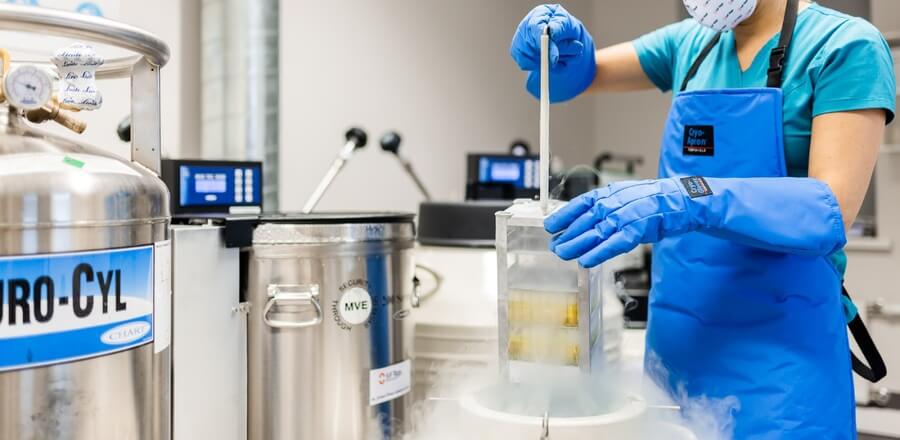
iVF Riga opened the first official genetic material bank in the Baltic States. It has a special freezer system for storing human reproductive cells, i.e. sperm, eggs (oocytes) and embryos.
iVF Riga Reproductive Cell Bank offers egg, sperm and embryo freezing and storage for patients.
Patients who are planning to have treatment of cancer or other serious condition may need to preserve their own genetic material, i.e. sperm or eggs. After treating those conditions there is a great risk of development of infertility problems for both men ann women.
Healthy people who are not planning to become parents right now, but want to preserve their fertility until the time when they will be ready to get pregnant, can also decide to freeze and preserve their genetic material.
In a fertility treatment cycle several eggs may be fertilised and used to develop embryos. Normally, 1 or 2 embryos are placed in the womb, but the remaining high quality embryos are frozen. Embryos can be safely stored at the genetic material bank waiting for the next transfer to the woman’s body. When the couple decide to have another baby, embryos will be thawed and transferred to the womb, which makes the artificial insemination cycle much easier, as there is no need for ovarian stimulation or puncture.
Today it is apparent that modern genetic material freezing methods (cryopreservation) are absolutely safe for sperm, eggs and embryos alike.
What is cryopreservation?
Cryopreservation is freezing of genetic material (eggs, sperm, embryos) at low temperature (-196 °C). It is a safe and proven method that does not affect embryo development or fertilizing capacity of eggs or sperm.
iVF Riga, among other things, uses the vitrification method (ultrarapid freezing), which allows preserving genetic material with high degree of survival of 98% after thawing.

 en
en lv
lv ru
ru lt
lt se
se no
no

